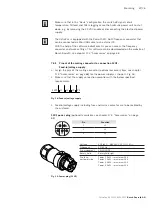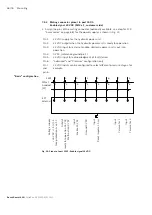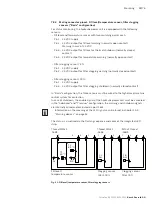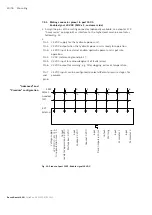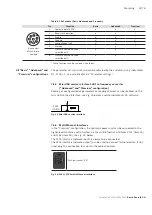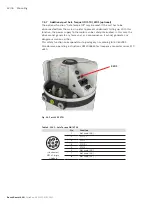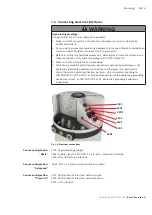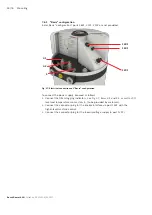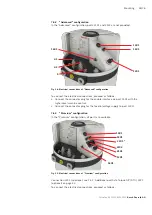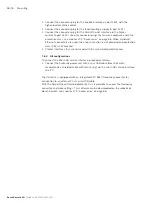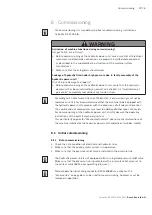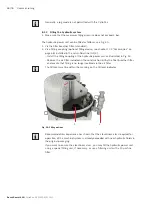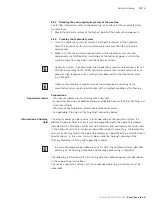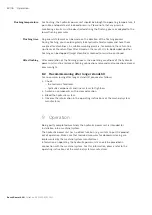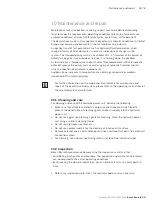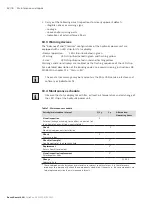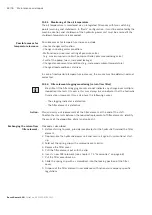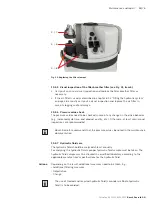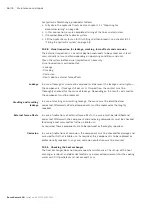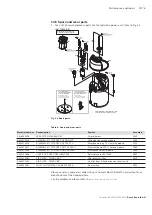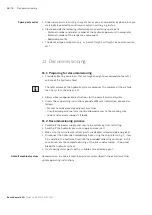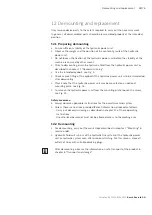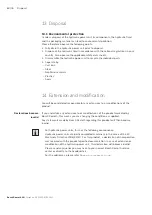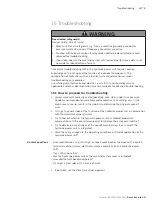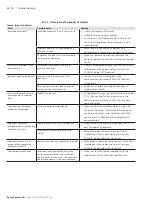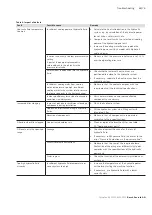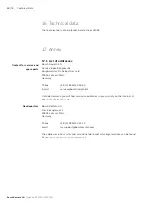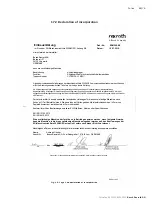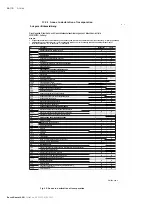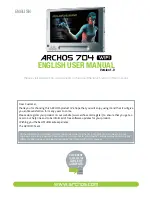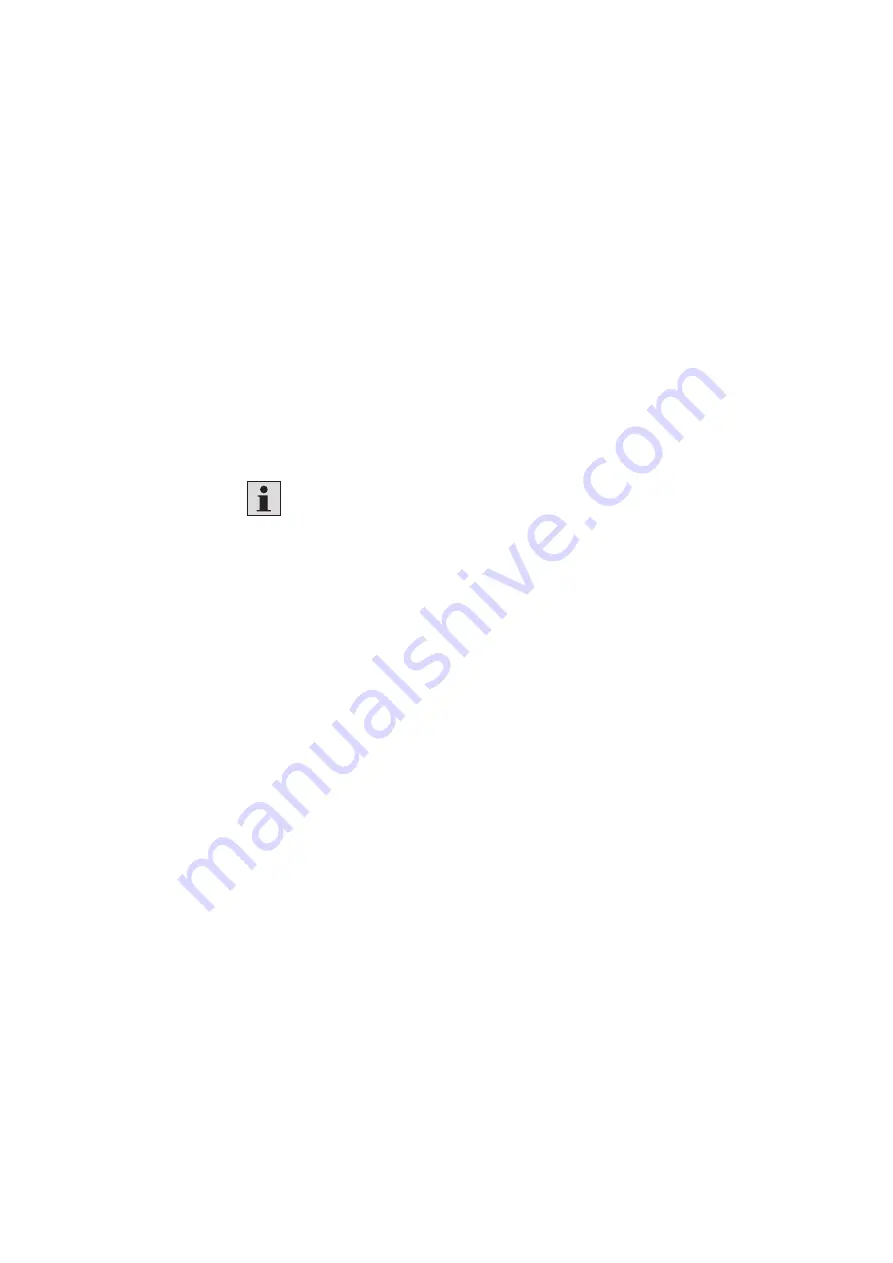
Maintenance and repair 51/76
CytroPac, RE 51055-B/02.2021,
Bosch Rexroth AG
10 Maintenance and repair
Maintenance tasks (inspection, servicing, repair) have to be defined according
to system-specific requirements, operating conditions (pressures, temperatures,
ambient conditions) and useful life (duty cycles, cycle times, shift operation).
The declarations made in this chapter are based on the climatic conditions in Central
Europe and common environments in the metal-processing industry.
A negative trend of test parameters such as hydraulic fluid temperature, short
change intervals of filter elements or noise are indications of changes in the
system. The troubleshooting matrix, see chapter 15.1.1 “Overview of the impact of
defects“on page 62, may provide assistance in narrowing down the problem.
A slow increase in temperature and/or shorter filter replacement intervals indicate
potential wear at the pump, seals as well as aging of hydraulic fluid and should
initiate inspection of all relevant components.
Sudden strong increases in temperature are alarming and require immediate
inspection of the machine/system.
For further information on the scope and time intervals for maintenance and
repair of the overall machine/system, please refer to the operating instructions of
the machine/system manufacturer.
10.1 Cleaning and care
For cleaning and care of the hydraulic power unit, observe the following:
▶
Make sure that all seals and electric plug-in connections are firmly fitted to
prevent the penetration of cleaning agents and/or humidity into the hydraulic
power unit.
▶
Do not use aggressive cleaning agents for cleaning. Clean the hydraulic power
unit using a suitable cleaning liquid.
▶
Do not use high-pressure cleaners.
▶
Do not use compressed air for the cleaning at functional interfaces.
▶
Remove external coarse dirt and keep sensitive and important parts like electrical
connections clean.
▶
For cleaning, use a damp, non-linting cloth or residue-free industrial wipes.
10.2 Inspection
Bosch Rexroth recommends documenting the inspection results so that
• considering functionality and economy, the inspection and maintenance intervals
can be adjusted to the actual operating conditions.
• by comparing the documented values, you can identify faults at an early point in
time.
▶
Before any inspection work, clean the hydraulic power unit as necessary.

